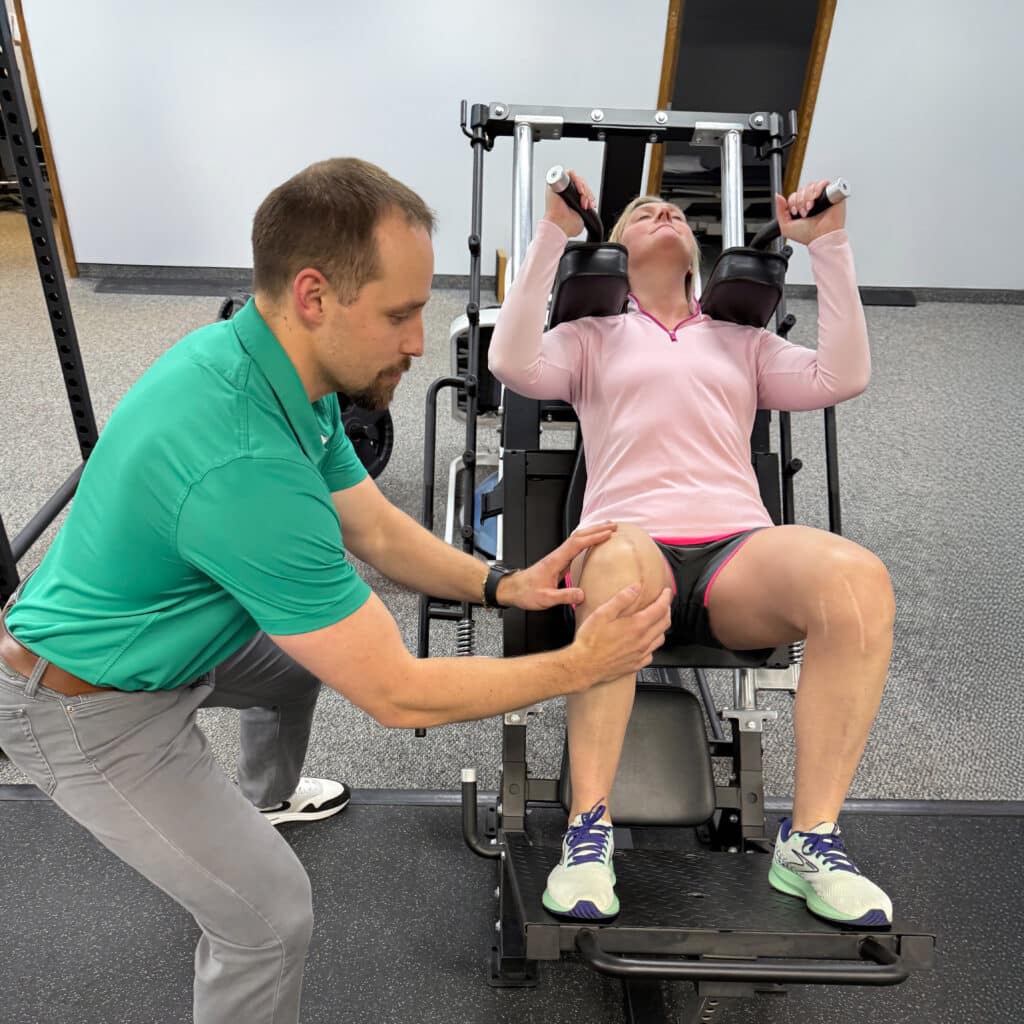Train Like An Athlete

As a young physical therapist, I’ve observed a growing interest in resistance training among younger individuals. It’s inspiring to see so many young Americans embracing their health—whether they’re striving to achieve personal records, improve their BMI, or simply build confidence. Throughout my early career, I’ve often heard older patients remark, “You’re training me like an athlete.” This sentiment highlights an important truth: strength training is not limited by age. Our bodies are capable of growth and resilience at any stage of life, and I hope to use this platform to emphasize that message.
Muscle strength is one very important measure of health, as sarcopenia (loss of muscle mass/strength associated with aging) leads to decreased functional status, impaired mobility, and increased risk of falling, all of which eventually increase the risk of mortality.
How Do We Combat Sarcopenia?
Physical activity and exercise! The positive benefits from a ten-week resistance training protocol include: increased lean muscle mass, increased metabolic rate, reduced fat, improved physical performance (walking speed, functional independence)1 to name just a few. A systematic review conducted by García-Hermoso et. al., analyzing approximately 2 million men and women over 38 different studies, concluded that higher levels of both upper and lower body strength are associated with a lower risk of mortality in the adult population, regardless of age and follow-up period.2
Resistance training does not have to be complex. A few compound movements with some additional accessory exercises, 2-3 times a week, yield great results. Compound movements include exercises that target multiple muscle groups and can be categorized as functional movements. Accessory movements often target 1-2 smaller muscles that can help address specific weakness and support muscles used in larger compound movements.
Lower Body
My favorite compound movement for the lower body is the squat. They’re not just about building strength; they’re incredibly functional, too. After all, every day we go from standing to sitting (and vice versa), so squatting helps with something we all do naturally. What’s even more interesting is a study by De Brito et al., which looked at 2002 adults between the ages of 51 and 78. It found that your ability to stand up from a sitting position is actually a powerful predictor of mortality. In fact, improving that ability by just one unit can lower the risk of death by 21%!3 And there’s more: research from García-Hermoso et al. also showed that adults with stronger legs have a 14% lower rate of mortality. 2 It’s pretty amazing how something as simple as squatting can have such a huge impact on our long-term health!
A few squat variations utilized at Hulst Jepsen Physical Therapy (easiest to hardest):
TRX Supported Squat:

Hack Squat:

Goblet Squat:

Barbell Back Squat:

Upper Body
My favorite compound movement for the upper body is the pull-up. Again, there are many variations to the pull-up that can either reduce or increase the challenge. This movement will target your back, arms, shoulders, and core muscles all in one movement. It also addresses your grip strength, which according to García-Hermoso et al. higher levels of hand grip strength are associated with a larger reduction in mortality rate when compared to lower body strength.2
We Can Help!
It’s never too late to start your fitness journey! According to Kennis et al., just one year of strength training can improve muscle performance in older adults for up to 7 years. However, if you stop resistance training, the benefits start to fade, and muscle function can decline with age. 4 This shows that strength training isn’t just a short-term fix—it’s a lifestyle change. It’s not about what you do, but about who you become!
At Hulst Jepsen Physical Therapy, we empower our patients with resistance training to address any areas of weakness and improve their overall function. We create personalized programs by combining compound and accessory exercises tailored to each individual’s specific needs. Whether you’re experiencing a decline in strength, balance, or simply want to start your fitness journey for a healthier, longer life, we’re here to help. Remember, it’s never too late to train like an athlete! Call us at 616-256-8679 or any of our 24 locations to schedule an appointment today and let us get the process of a long, healthy life started!
Sources
1. Westcott WL. Resistance Training is Medicine: Effects of Strength Training on Health. Current Sports Medicine Reports. 2012;11(4):209-216. doi:10.1249/JSR.0b013e31825dabb8
2. García-Hermoso A, Cavero-Redondo I, Ramírez-Vélez R, et al. Muscular Strength as a Predictor of All-Cause Mortality in an Apparently Healthy Population: A Systematic Review and Meta-Analysis of Data From Approximately 2 Million Men and Women. Archives of Physical Medicine and Rehabilitation. 2018;99(10):2100-2113.e5. doi:10.1016/j.apmr.2018.01.008
3. De Brito LBB, Ricardo DR, De Araújo DSMS, Ramos PS, Myers J, De Araújo CGS. Ability to sit and rise from the floor as a predictor of all-cause mortality. Eur J Prev Cardiolog. 2014;21(7):892-898. doi:10.1177/2047487312471759
4. Kennis E, Verschueren SM, Bogaerts A, Van Roie E, Boonen S, Delecluse C. Long-Term Impact of Strength Training on Muscle Strength Characteristics in Older Adults. Archives of Physical Medicine and Rehabilitation. 2013;94(11):2054-2060. doi:10.1016/j.apmr.2013.06.018
